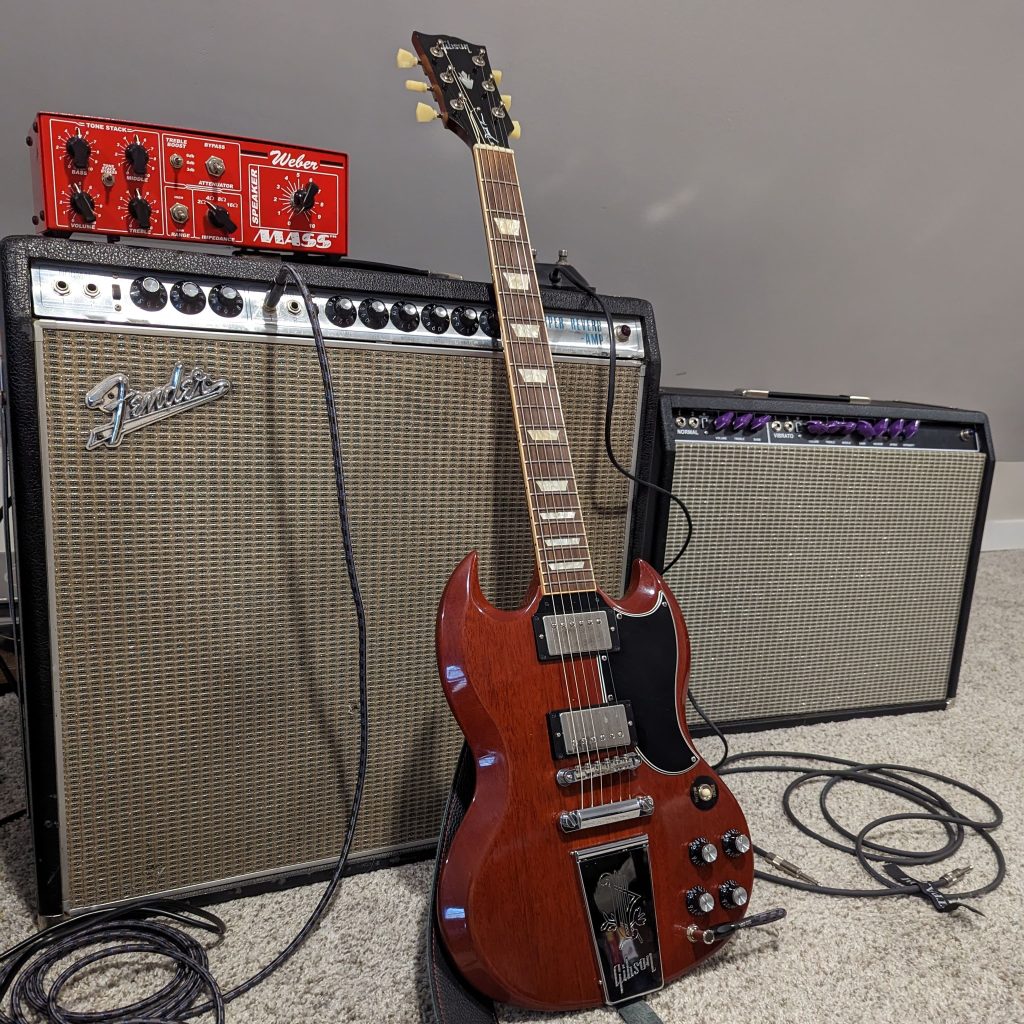
A little over 2 years ago, while browsing in Guitar Center, I saw my Super Reverb for sale in the used gear room. A cursory look in the back of the amp showed original transformers, original speakers, and 2 prong cable, which suggested it may be completely original inside. My wife happened to be with me that day, and, lovely woman that she is, told me to buy it.
It has been my favorite amp ever since. And yes, it was completely stock. Original RCA black plate tubes, original filter caps, even a vintage box of made in USA GE fuses.
But it was quiet, and it sounded amazing, so that’s how I played it. Practically every day. I even gigged it for a while.
Eventually the parts you expect to die started dying. First a preamp tube, then the filter caps. I replaced the filter caps and went ahead and installed a 3 prong cable some time ago when those went out.
But most recently, the saddest failure of all: The original black plate RCA 6L6s failed. I replaced them with a spare set of JJs I had laying around, and the bias was way off, which motivated me wanting to actually be able to measure the bias current. I decided to install some resistors to measure bias current precisely, but that got the wheels turning on some mods that seemed interesting.
The Mods
The first of the mods was functional, I just wanted to install some resistors to measure bias current. This would be transparent to the tone of the amp, which highlights the most important thing to me: I did not want to change the vibrato channel’s tone at all. The vibrato channel of this amp cranked to 8 is one of the best guitar tones on the planet. But I never use the Normal channel, so that opened some interesting options. I performed the following mods:
- Power tube bias measure resistors
- Tremolo (Vibrato) slow down
- Normal channel EQ mod to Tweed Bassman tone stack
- Kill switch for Negative Feedback
- Normal channel routed through reverb and trem
Power tube bias measure resistors
The first mod was the most simple. I wanted to be able to measure the bias current of the power tubes directly while adjusting the grid voltage, so I installed a 1ohm 5W wire wound resistor to ground on the cathode of each 6L6 in place of the direct ground connection. 1 ohm is a small enough value that it won’t impact performance at all, 5W wirewound is overkill in terms of power capability, but ideally they’ll survive most any tube failure, and wirewound is the lowest possible noise.
I simply broke the cathode connections to ground, installed the 1ohm resistors in their place to the same ground contact point, and stuck the resistors to the chassis with a little high temp epoxy to keep them from moving around. Below is the power tube wiring with added resistors, the big white rectangles.
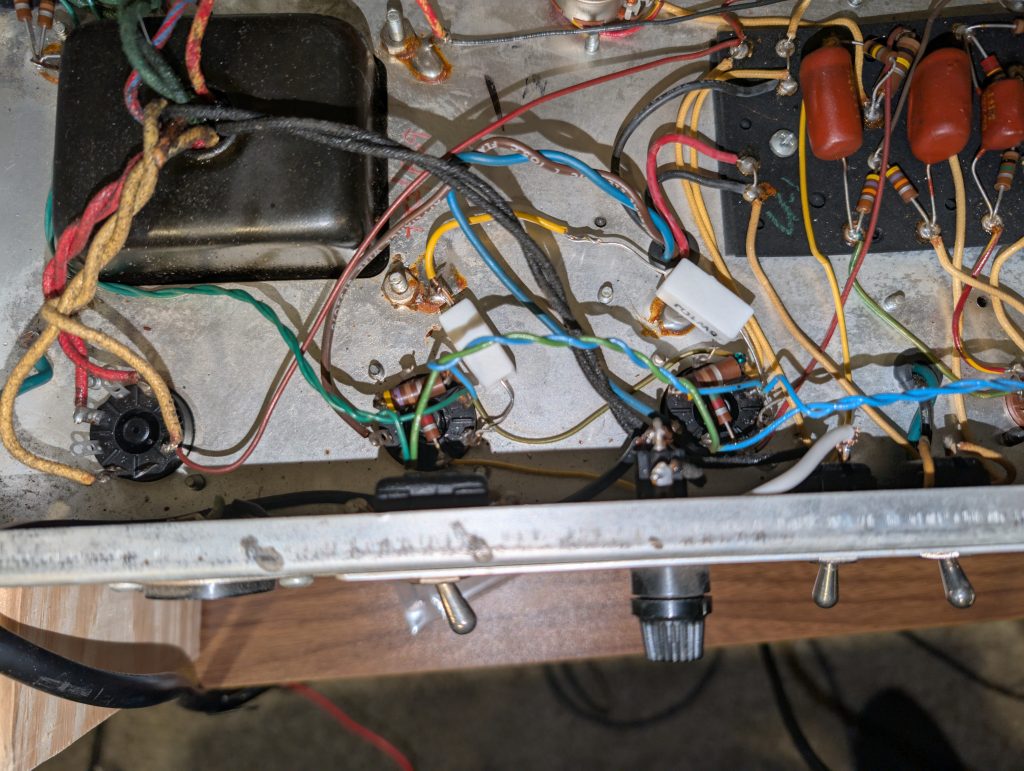
The original Fender schematic for the Super Reverb shows the grid voltage should be set to -52V. This was a good bias voltage with the vintage tubes. With the new bias measure points, I was able to see that the new tubes were only biased to about 17mA at -52 V; Fender’s service manual for the reissue super reverb suggests it should be 33mA. I adjusted the bias voltage until one of the tubes read 33mA of current. They were actually slightly mismatched, so the other tube is biased at 29mA. For hi-fi applications this would be a problem, for good even order harmonic distortion, it is perhaps preferred to have a bit of mismatch for a guitar amp. The new bias voltage is about -47V for the modern production tubes. Quite a difference!
tremolo slow down
One of the common complaints about black panel Fender tremolo (I refuse to call it “Vibrato,” Fender) is that the slowest setting is still too fast. Increasing the size of the capacitors in the tremolo oscillator will slow down the oscillation. You sacrifice how fast the trem can get on the top end with this mod. That can be addressed, but I never use it that fast anyway.
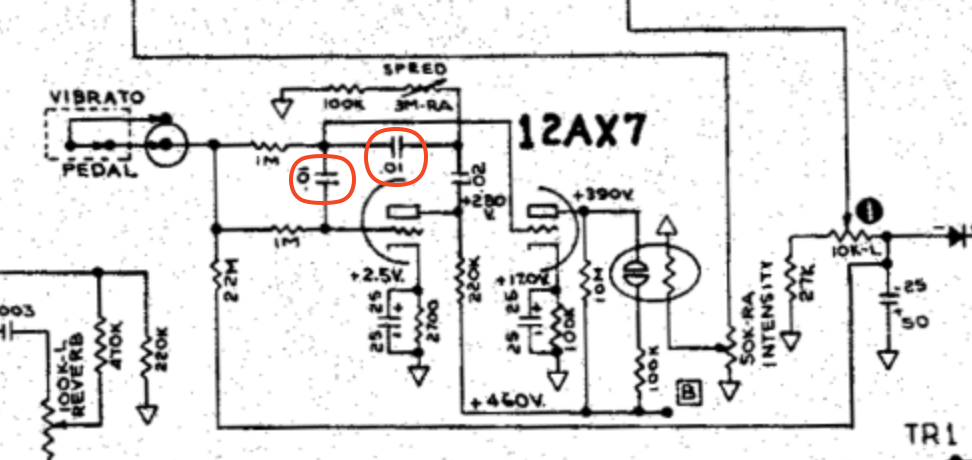
Just by replacing the 0.01uF capacitors circled with 0.02uF caps, I slowed the trem down at its slowest setting from 215 bpm to 125 bpm. Much better. I installed new production Orange Drop caps for this. I had some vintage ceramic disc caps from another amp teardown I could have piggy backed onto the existing caps to hit 0.02uF, but their leads were brittle, so I didn’t take any chances.
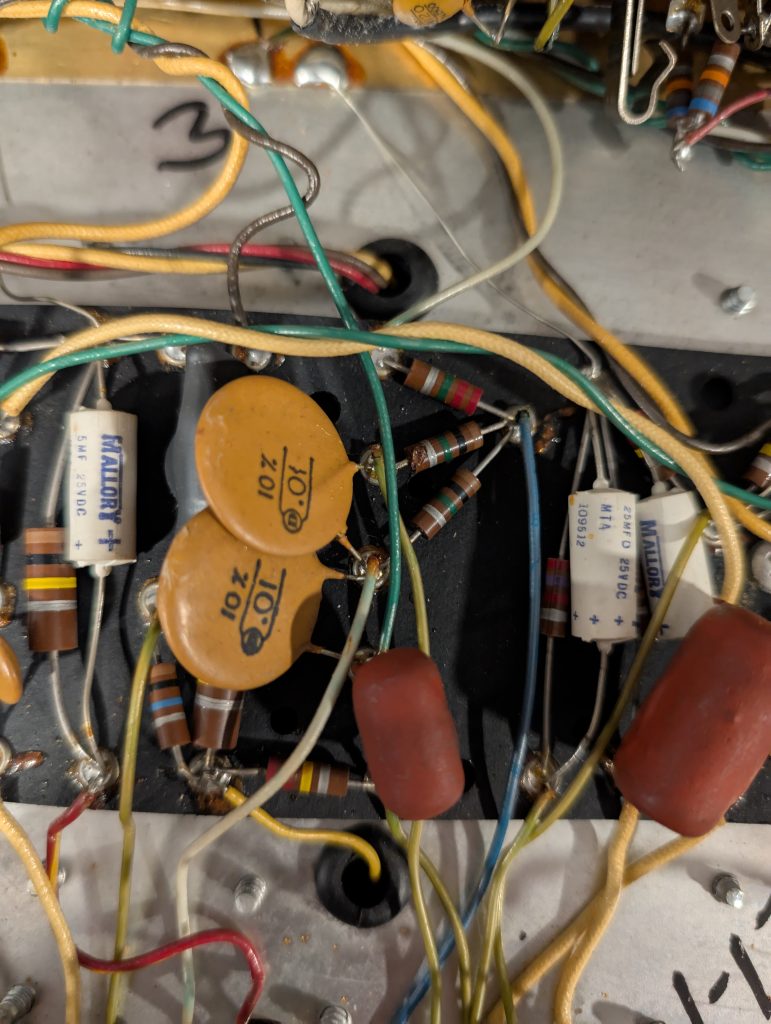
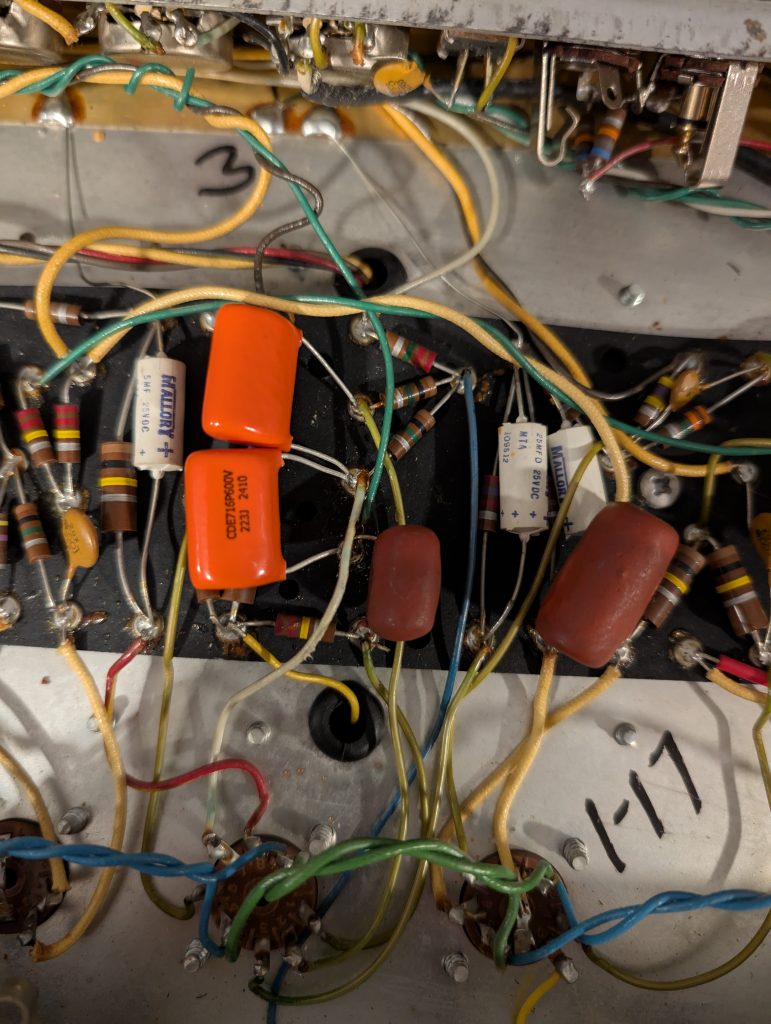
Normal channel revoicing
As much as I love the AB763 Fender amps, I’ve never found any use for the Normal channel. The tone stack is identical to the Vibrato channel, but there’s no reverb or trem, and most of the time the mid control gets dropped. As a result, I never use this amp’s Normal channel. But the 2x6L6 4×10″ speaker format of the Super Reverb is familiar. It’s also the format of the 1959 Fender Bassman, an amp with a much bass and mid-forward “Tweed” style tone stack.
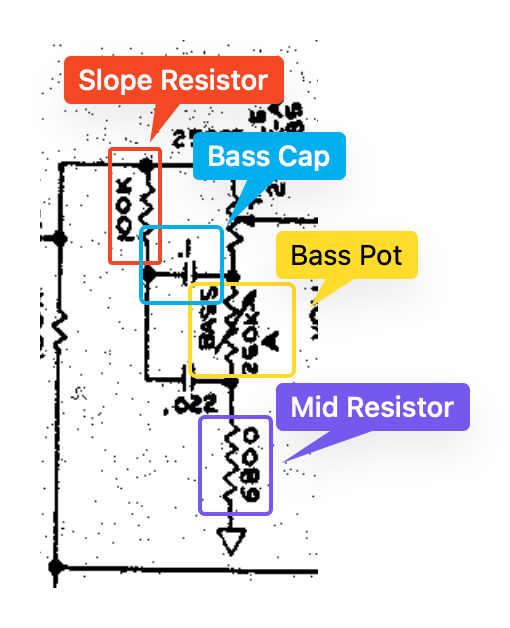
By changing the slope resistor to 58kohms, bass cap to 0.02uF, bass pot 1Mohm, and mid resistor to 21kohms, I was able to replicate the 59 Bassman tone stack. I did have to pick a fixed mid resistor value because there is no mid control on the normal channel, and I picked a value that would have been a pretty high setting, probably around 7, on a mid pot.
The end result is a channel that has more gain and is overall a lot “thicker.” This was now a very different sounding channel compared the Vibrato channel, and that alone will make it more useful.

Negative feedback killswitch
I was surprised at how much I liked the Tweed conversion of the Normal channel, so I wanted to take it a step further. I repurposed the defunct Ground switch to disconnect the negative feedback, which is reminiscent of the 5e3 tweed Deluxe. The power amp’s negative feedback makes it more linear and lower gain. Removing it when the amp is already overdriven adds an extra level of distortion that is reminiscent of the classic Tweed Deluxe tones from the 60s and 70s. It sounds good on both channels, but it’s nice to be able to retain the stock power amp with the Vibrato channel but disconnect the feedback with the Tweed channel.
Route normal channel through reverb and tremolo
My final complaint about the normal channel is that the amp’s reverb and tremolo aren’t available in that channel. It’s a fairly popular mod to add it into the normal channel, even Fender does this in their own 68 Custom Deluxe Reverb Reissue. I moved the mix point of the channels from the phase inverter to the reverb input using their existing coupling caps, and 220kohm mix resistors such that trem and reverb now work on both channels, but the Vibrato channel does not see any notable loading or interaction from the Normal channel.
References
As always when I’m working on an AB763, I lean on Rob Robinette’s website. Most of the mods I performed can be found there, and in particular he has an excellent discussion on the best way to route the normal channel through reverb and trem without sacrificing anything.
In order to keep track of what is actually in my amp, I made a copy of an AB763 Super Reverb Schematic for note taking and hand edits. See below, but be aware there may be mistakes in the schematic. I intend to generate a formal schematic eventually.

A few bucks in parts and a couple of hours of work, and now I have a Tweed style tone with reverb and tremolo in addition to the stock black panel Super Reverb sound in one box. My favorite amp is even better!
